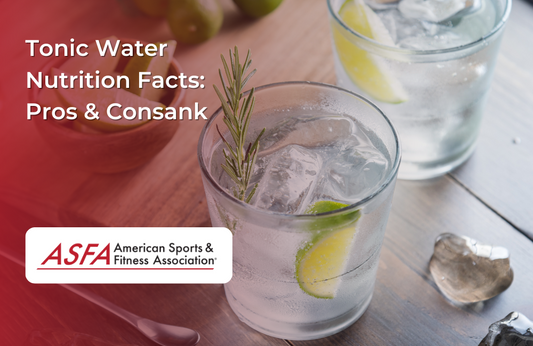Have you been working hard at the gym, but lately, you’re noticing that your progress has slowed down or even stopped? This frustrating experience is known as a workout plateau or fitness plateau, and it’s something that many people face after a period of consistent training. A plateau occurs when your body adapts to the stress of your routine, which makes it harder to continue seeing gains in strength, endurance, or weight loss.
While it’s frustrating, breaking through a plateau is completely possible. This detailed guide will explore five reasons why you might be stuck and provide actionable solutions to get back on track and push beyond the plateau. Let’s dive in.
Understanding Workout Plateaus
What is a Workout Plateau?
A workout plateau is a common phenomenon where an individual’s progress in their fitness journey comes to a standstill. Despite consistent effort and dedication, they may find that they are no longer making gains in muscle mass, strength, or overall fitness. This can be a frustrating experience, especially for those who have been working hard to achieve their fitness goals.
A workout plateau can occur due to various reasons, including doing the same workout routine for an extended period, not challenging oneself enough, or not allowing for adequate rest and recovery time. It can also be caused by a lack of proper nutrition, which is essential for muscle growth and repair.
Understanding the concept of a workout plateau is crucial in overcoming it. By recognizing the signs and symptoms of a plateau, individuals can take proactive steps to break through it and continue making progress in their fitness journey.
1) You're Not Pushing Yourself Hard Enough
One of the most common reasons for hitting a plateau is simply that you’re not pushing yourself hard enough to improve your fitness level. Over time, your body becomes efficient at handling the same exercises, weights, and repetitions. If you’re always lifting the same weights or running at the same speed, your muscles and cardiovascular system will adapt, and growth will stagnate.
Why This Happens:
-
Adaptation: Your body is designed to adapt to stress. If you’re always lifting 20-pound dumbbells for the same number of reps, your muscles will eventually stop growing because they are no longer challenged.
-
Lack of progressive overload: To see continued progress, you need to apply a concept called "progressive overload." This means steadily increasing the demands on your body through heavier weights, more reps, or more intense exercises.
How to Push Yourself:
-
Increase weights: If you’ve been lifting the same amount for more than a few weeks, it’s time to increase the load. Even a small increase of 2-5 pounds can help.
-
Add intensity: Instead of performing steady-state cardio, try incorporating High-Intensity Interval Training (HIIT), which alternates short bursts of intense exercise with recovery periods.
-
Extend your sets: If you’ve been doing 10 reps per set, try increasing to 12 or 15 reps, or add a fourth set to your routine. Incorporating high reps with lighter weights can enhance muscle endurance and vary your training to avoid plateaus.
Actionable Tips:
-
Track your progress. Log how much you’re lifting and for how many reps so you can continually push yourself harder.
-
Use apps or fitness trackers to monitor cardio progress. Aim for faster times, higher inclines, or more intensity in each session.
-
Increase weights or intensity in small increments to ensure continual growth and avoid injury.
You're Stuck in the Same Workout
Doing the same exercises every week is not only boring, but it’s also a recipe for hitting a plateau in exercise. Your muscles need new challenges to grow, and repeating the same movements can cause them to stop responding. Additionally, using the same muscle groups repeatedly without engaging different ones can create muscle imbalances, leading to poor performance and potential injury.
Why Variety Matters:
-
Muscle confusion: By introducing new exercises, you create what’s known as “muscle confusion,” which forces your muscles to adapt to new stimuli and triggers growth.
-
Prevent boredom: Variety keeps you mentally engaged, which can help you stay motivated and avoid the dreaded workout burnout.
-
Target different muscles: Incorporating a variety of exercises ensures you’re hitting different muscle groups, leading to more balanced muscle development.
How to Add Variety:
-
Mix up your workouts: If you typically run, try biking, swimming, or rowing for cardio. For strength training, alternate between free weights, machines, resistance bands, and bodyweight exercises.
-
Change your workout structure: Instead of always doing three sets of 10 reps, try pyramid sets (increasing or decreasing weight), supersets (two exercises back-to-back with no rest), or circuit training (moving from one exercise to the next without stopping).
-
Focus on different muscle groups: On leg day, mix in different types of squats, lunges, and leg presses. On upper-body days, rotate between bench presses, dumbbell flyes, push-ups, and cable machines to hit the muscles from various angles.
Actionable Tips:
-
Rotate between different types of strength training (e.g., heavy lifting, bodyweight exercises, kettlebells) every 4-6 weeks.
-
Incorporate exercises that target muscles you haven’t worked recently.
-
Try a new fitness class, sport, or activity at least once a month to keep things fresh.
3) You're Not Giving Your Body Enough Time to Recover
Rest and recovery are often overlooked components of an effective fitness regimen. While it’s tempting to push through soreness and fatigue, inadequate recovery can prevent muscle growth and lead to overtraining. This can result in a plateau phase, where improvements in muscle strength or endurance cease despite ongoing effort. Your muscles grow during rest, not during the actual workout, so if you’re constantly working out without rest, your body doesn’t have time to repair and build stronger muscle tissue.
Why Recovery Is Critical for Muscle Mass:
-
Muscle repair: When you lift weights or perform any resistance training, you’re creating micro-tears in your muscle fibers. These fibers repair during rest, leading to stronger muscles. Without sufficient rest, muscles can’t rebuild.
-
Avoid overtraining syndrome: Overtraining leads to physical and mental fatigue, decreased performance, and even a weakened immune system. If you feel tired all the time or have lost motivation to exercise, you may be overtraining.
-
Prevent injury: Continuous stress on the muscles and joints without recovery can lead to injuries, including strains, sprains, or more serious conditions like tendinitis.
How to Improve Recovery:
-
Schedule rest days: Make sure to take at least one or two days off from intense exercise each week. These rest days give your body a chance to repair and recharge.
-
Incorporate active recovery: On rest days, engage in light activities like walking, swimming, or yoga to promote blood flow and reduce muscle soreness.
-
Use recovery tools: Foam rollers, massage guns, and stretching routines can help alleviate muscle tension and speed up the recovery process.
Actionable Tips:
-
Plan at least one full rest day each week, or follow a 3-on, 1-off training schedule.
-
Incorporate light stretching and foam rolling post-workout to reduce muscle stiffness and enhance recovery.
-
Listen to your body – if you’re feeling fatigued, it might be a sign you need more rest.
4) You're Not Getting Enough Sleep
Sleep is often the missing piece of the fitness puzzle. While working out and eating right are crucial, sleep is where a significant amount of muscle recovery and growth takes place. Without adequate sleep, your body is unable to fully recover, and this can lead to stunted progress and poor performance in the gym.
How Sleep Impacts Fitness:
-
Hormone regulation: Sleep helps regulate important hormones like cortisol (stress hormone) and growth hormone (critical for muscle repair). When sleep is compromised, these hormones can become imbalanced, resulting in impaired recovery and performance.
-
Energy levels: Lack of sleep leaves you feeling tired and sluggish, making it harder to push yourself in your workouts. You may also lack the mental focus to complete exercises with proper form, which can lead to poor results and even injury.
-
Mental clarity: Proper sleep is essential for cognitive function, focus, and motivation. When you’re sleep-deprived, it becomes harder to stay consistent and motivated in your fitness routine.
How to Improve Your Sleep Quality:
-
Create a sleep schedule: Go to bed and wake up at the same time every day to regulate your body’s internal clock.
-
Limit screen time before bed: Blue light from phones, tablets, and computers can interfere with your body’s ability to wind down. Avoid screens at least an hour before bed.
-
Optimize your sleep environment: Keep your bedroom dark, cool, and quiet. Consider blackout curtains and white noise machines if needed.
Actionable Tips:
-
Aim for 7-9 hours of sleep every night to ensure proper recovery.
-
Develop a relaxing bedtime routine to wind down (e.g., reading, meditation, or stretching).
-
Avoid caffeine and heavy meals close to bedtime.
5) You're Not Eating Right
No matter how hard you work in the gym, if your diet isn’t aligned with your fitness goals, you won’t see the results you want. Proper nutrition fuels your workouts, aids in recovery, and provides the building blocks needed for muscle growth. Additionally, tracking your body composition is crucial, as it helps monitor improvements in muscle mass and fat percentage. Without the right balance of nutrients, your progress can come to a halt.
How Diet Affects Performance:
-
Fuel for energy: Carbohydrates are your body’s primary source of energy. Without enough carbs, you may feel sluggish during workouts and lack the energy to push yourself to the next level.
-
Protein for muscle repair: Protein is essential for repairing muscle tissue after a workout. If you’re not getting enough protein, your muscles won’t have what they need to grow and recover.
-
Hydration: Dehydration can severely affect your performance. Even mild dehydration can cause fatigue, decreased strength, and poor focus.
How to Improve Your Proper Nutrition:
-
Balance macronutrients: Ensure that your diet includes the right balance of protein, carbohydrates, and healthy fats. For example, aim for 0.8-1 gram of protein per pound of body weight to support muscle repair and growth.
-
Pre- and post-workout meals: Eat a balanced meal with carbs and protein 1-2 hours before your workout to fuel your performance. After your workout, have a protein-rich snack or meal within 30 minutes to help with recovery.
-
Stay hydrated: Drink plenty of water throughout the day, especially before, during, and after your workouts.
Actionable Tips:
-
Ensure your meals include lean proteins, complex carbohydrates, and healthy fats.
-
Eat a small snack, such as a banana with peanut butter, before working out for extra energy.
-
Drink at least 8-10 glasses of water per day, and more if you’re doing intense exercise.
Seeking Help and Support
Why Seeking Help Matters:
Seeking help and support is essential when trying to overcome a workout plateau. Working with a personal trainer or fitness coach can provide individuals with the guidance and motivation they need to break through the plateau and achieve their fitness goals.
A personal trainer can help individuals identify the causes of their plateau and develop a customized training program that addresses their specific needs and goals. They can also provide support and motivation, which is critical in helping individuals stay on track and overcome obstacles.
Additionally, seeking help from a registered dietitian or nutritionist can also be beneficial in overcoming a workout plateau. Proper nutrition is essential for muscle growth and repair, and a registered dietitian or nutritionist can help individuals develop a personalized nutrition plan that supports their fitness goals.
How to Find Support:
There are several ways to find support when trying to overcome a workout plateau. Here are a few options:
-
Hire a personal trainer or fitness coach who can provide guidance and motivation.
-
Join a fitness community or group fitness class to connect with like-minded individuals who can provide support and motivation.
-
Consult with a registered dietitian or nutritionist to develop a personalized nutrition plan.
-
Seek out online resources and fitness forums where individuals can connect with others who are going through similar experiences.
-
Consider working with a fitness accountability partner who can provide support and motivation.
By seeking help and support, individuals can overcome a workout plateau and continue making progress in their fitness journey.
Conclusion: How to Break Through Your Fitness Plateau
A workout plateau doesn’t mean failure – it’s a sign that your body has adapted and is ready for new challenges. By recognizing the signs of a training plateau and implementing these strategies, you can push past the plateau and continue progressing toward your fitness goals.
Key Takeaways:
-
Increase intensity: Push your body harder by adding more weight, reps, or intensity to your workouts.
-
Introduce variety: Mix up your routine with new exercises, different workout styles, and varied equipment to prevent boredom and promote growth.
-
Prioritize recovery: Give your muscles the rest they need by incorporating rest days and active recovery.
-
Get enough sleep: Sleep is essential for muscle repair, hormone balance, and energy levels.
-
Fuel your body properly: Eat a balanced diet that supports your energy needs and aids in muscle recovery.
By staying consistent, listening to your body, and making these adjustments, you’ll break through your workout plateau and continue to see the results you’re working toward. Remember, progress takes time and dedication – but with the right approach, you’ll soon be back on track and achieving your fitness goals!





